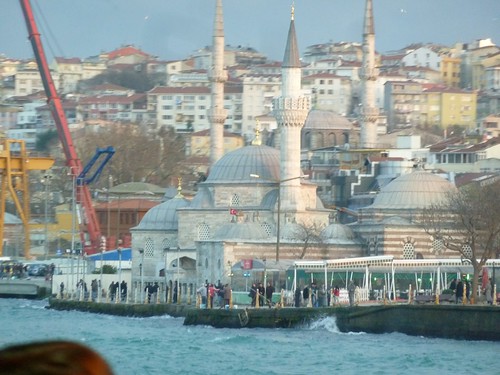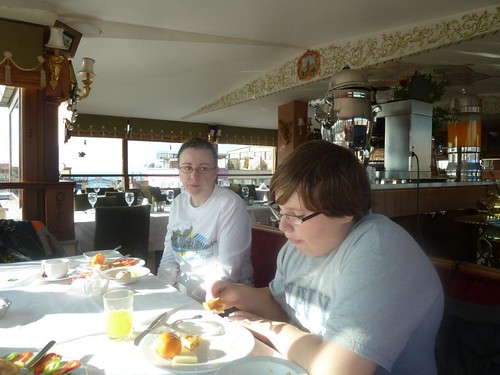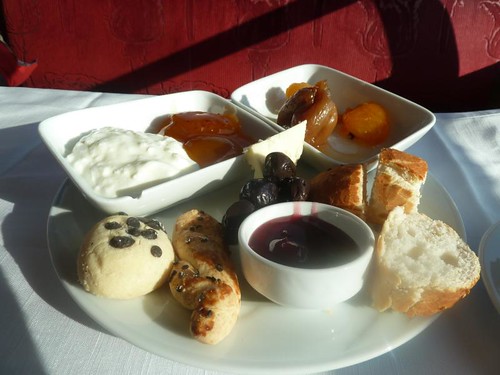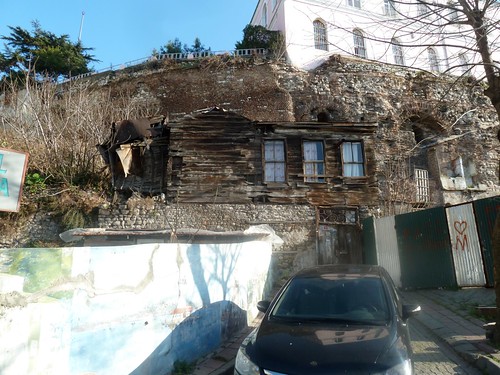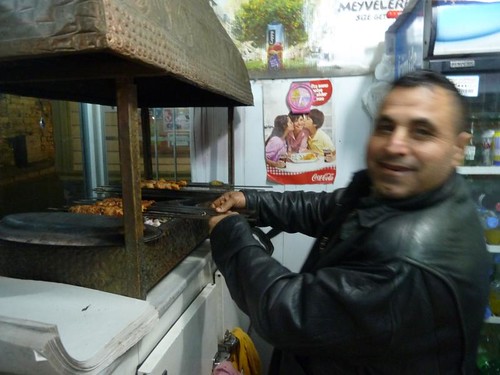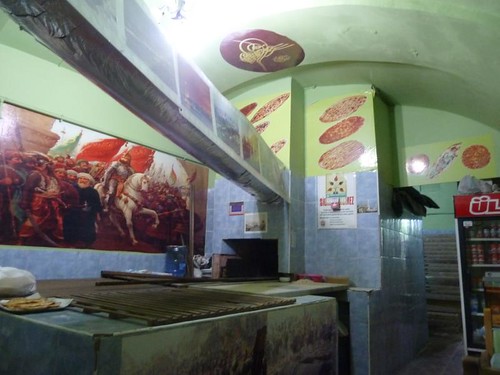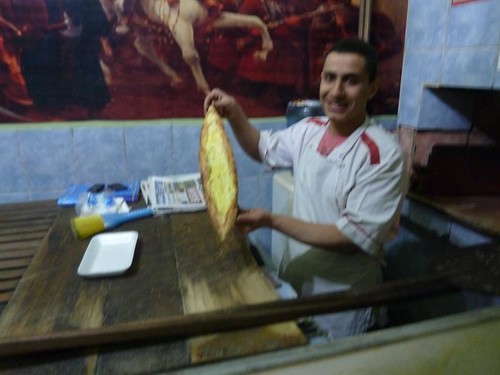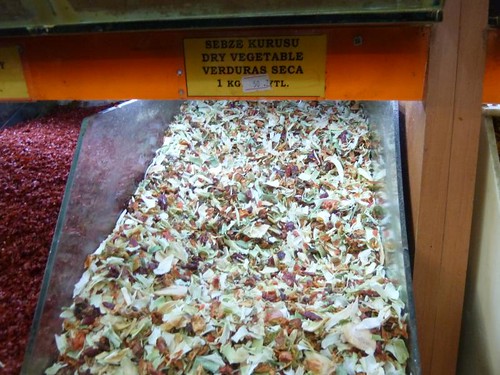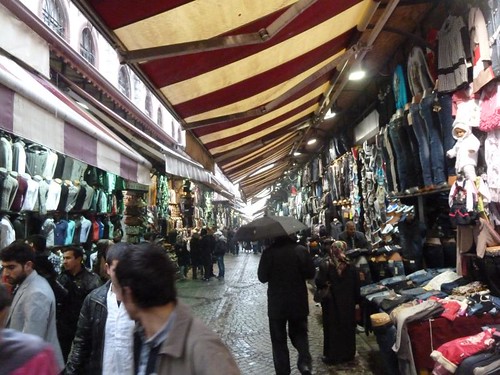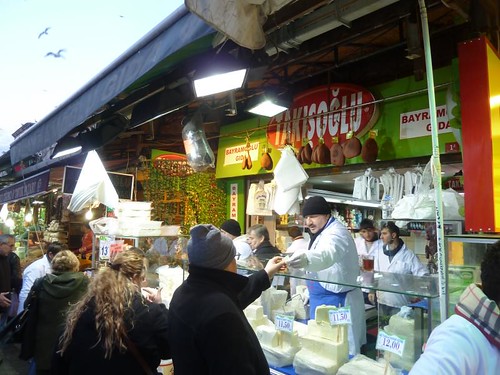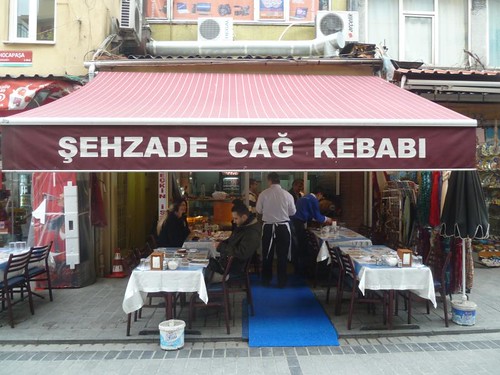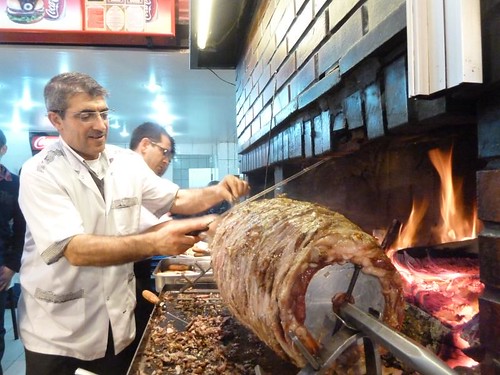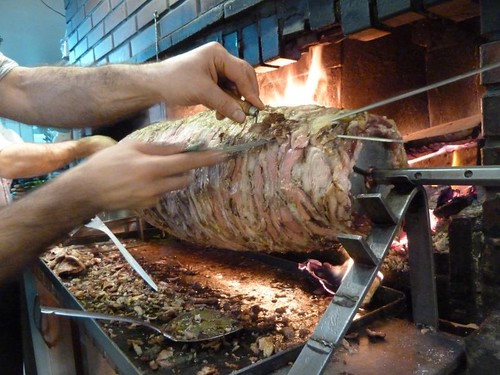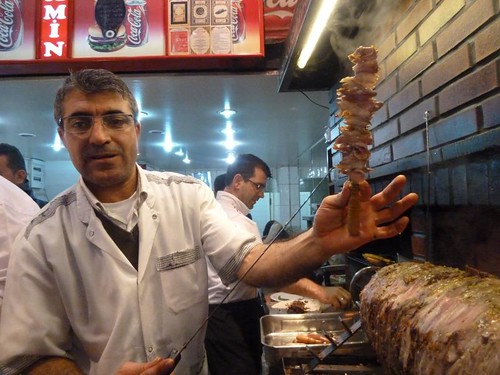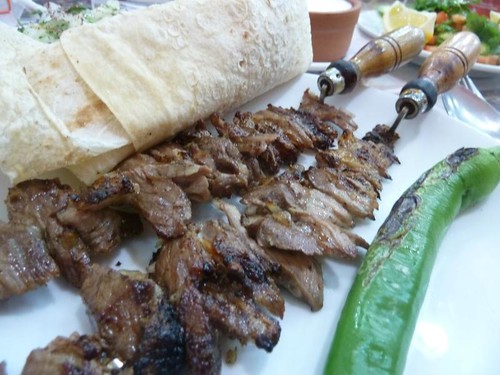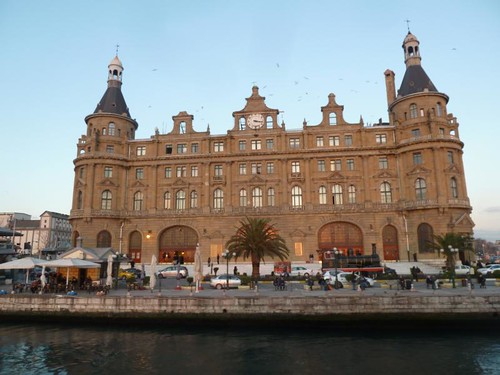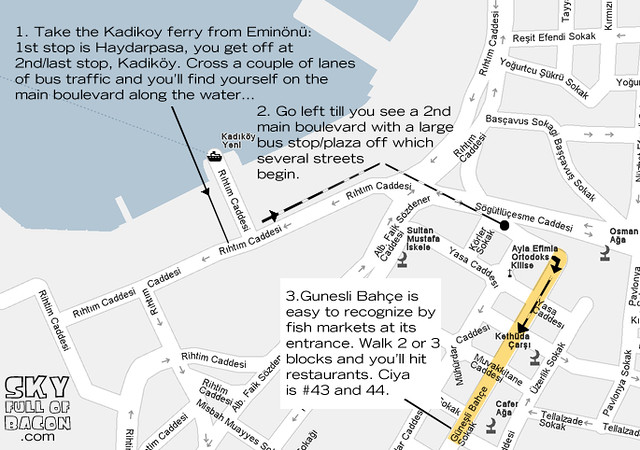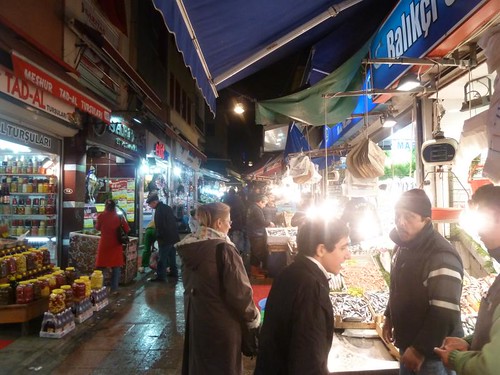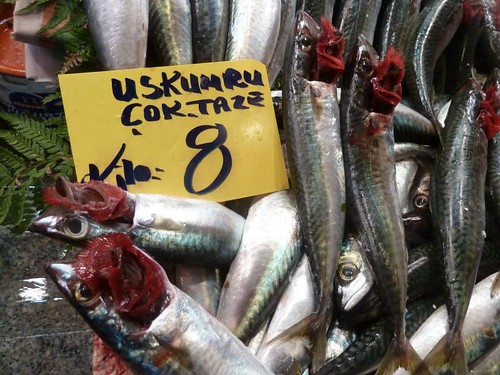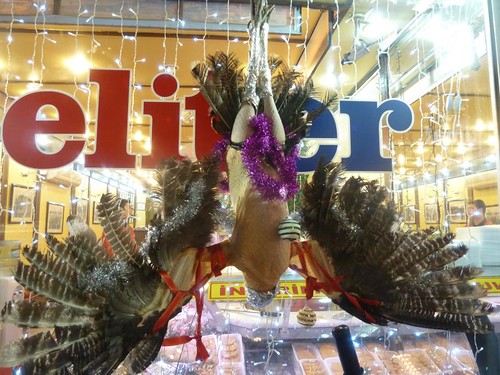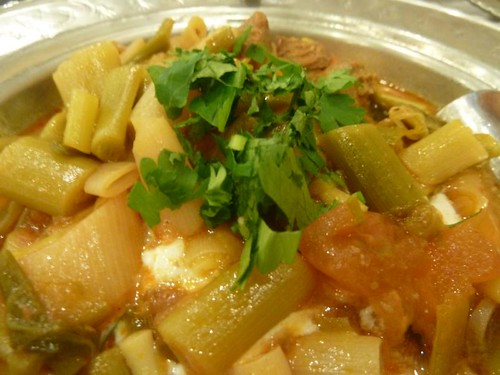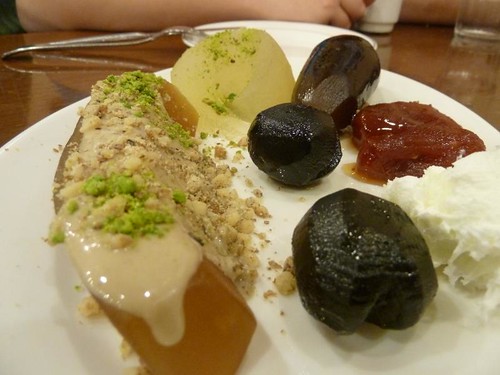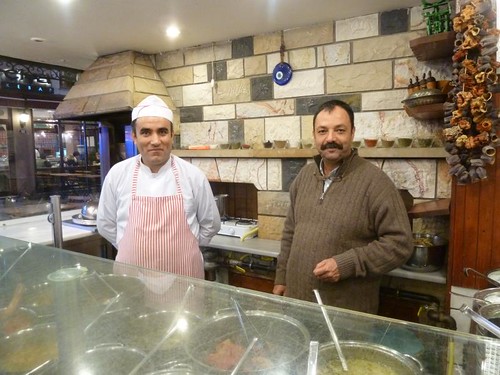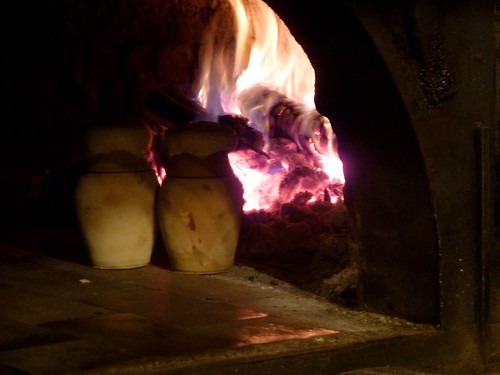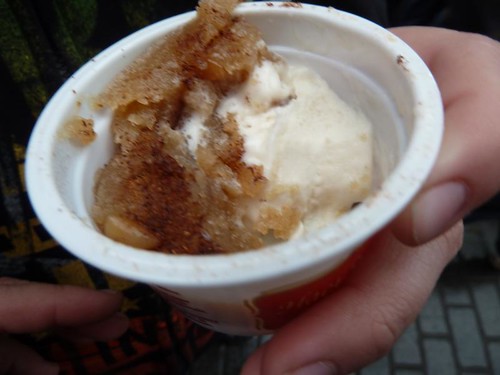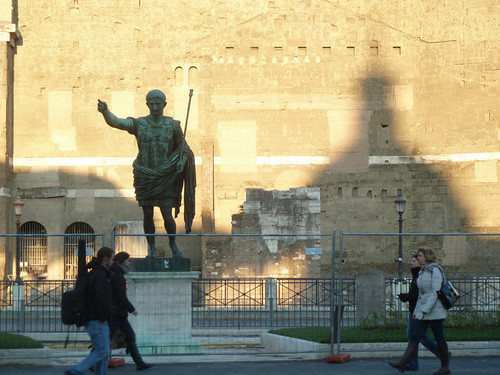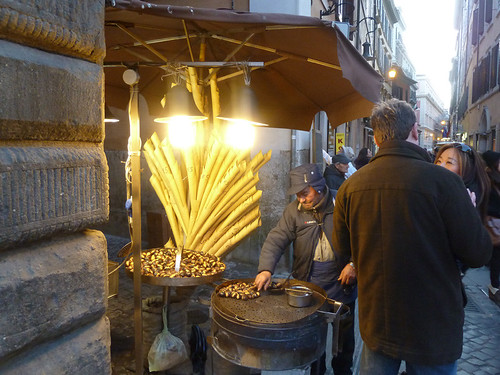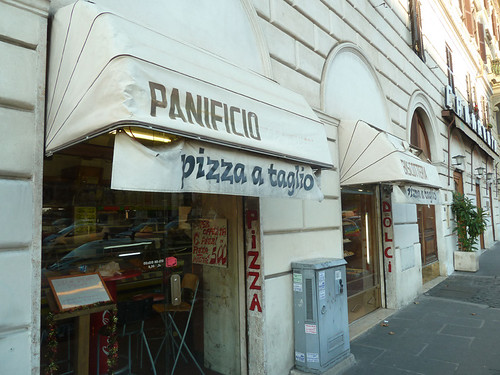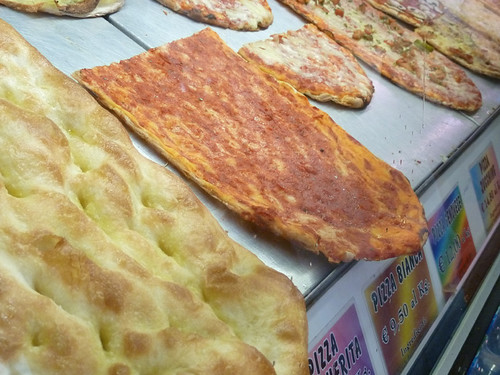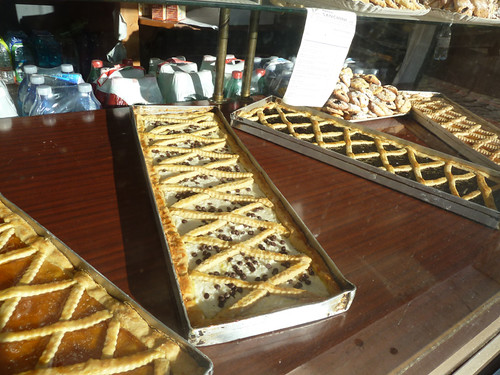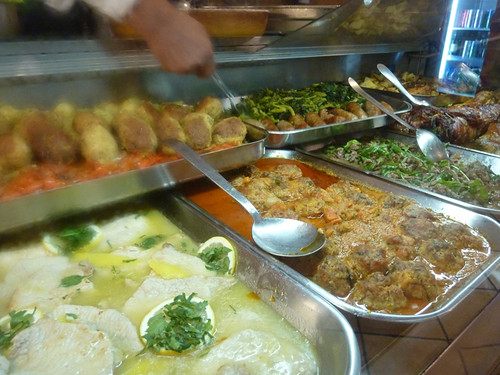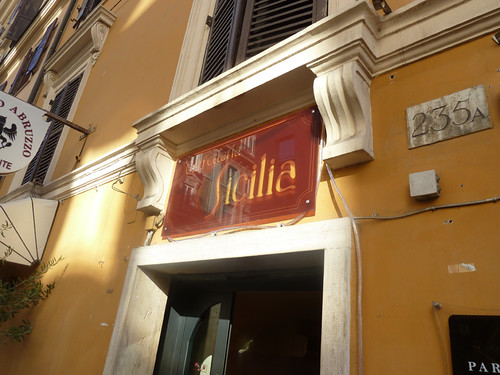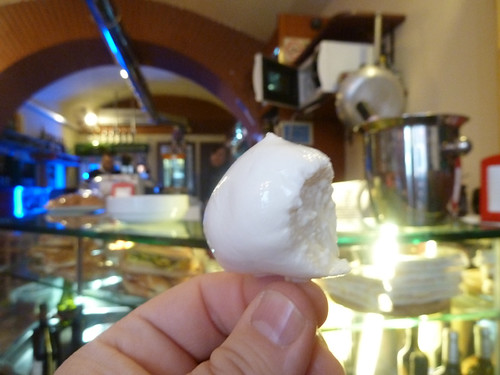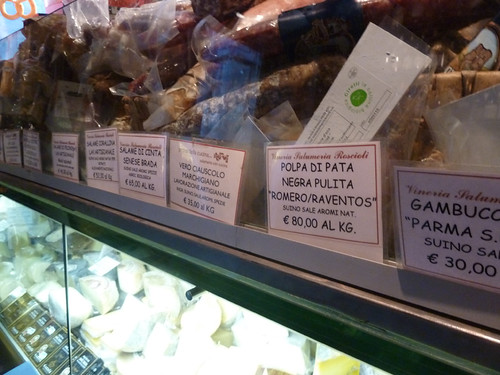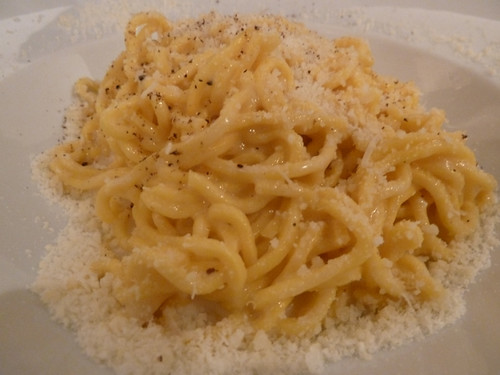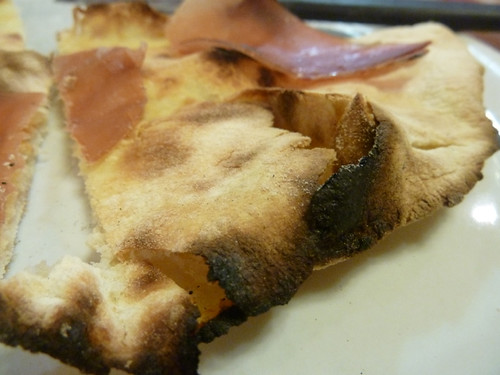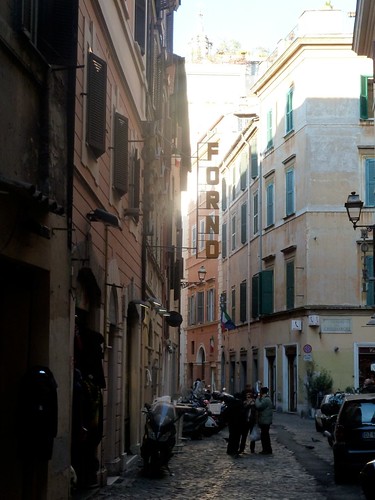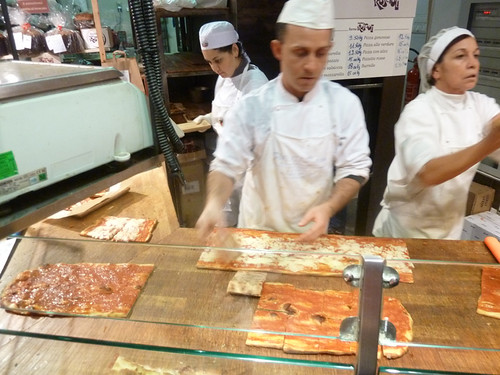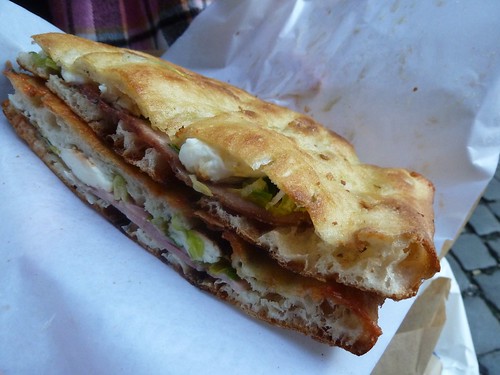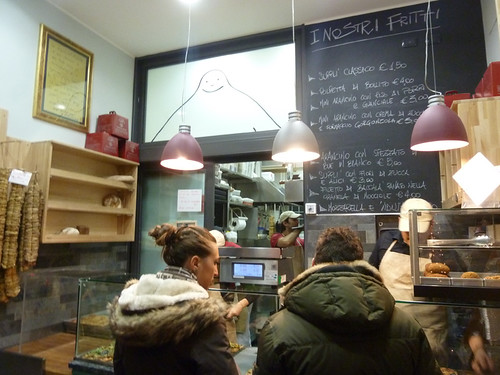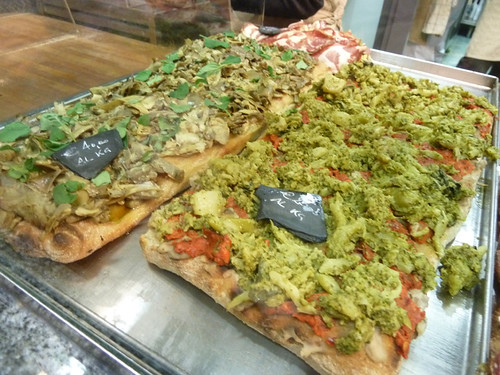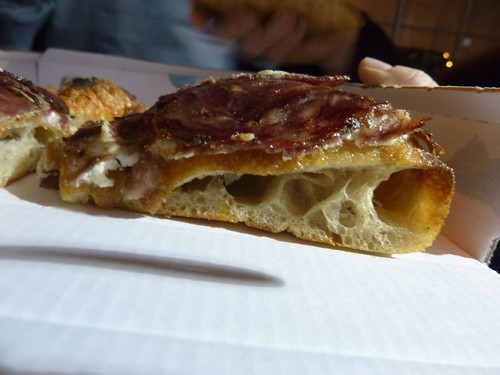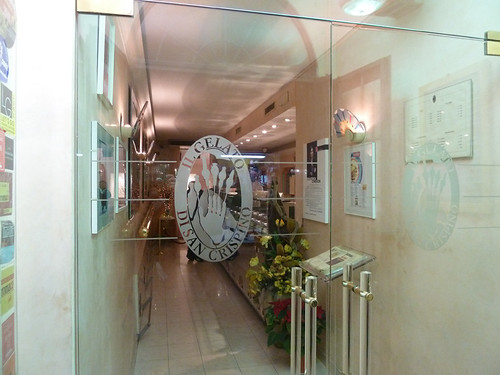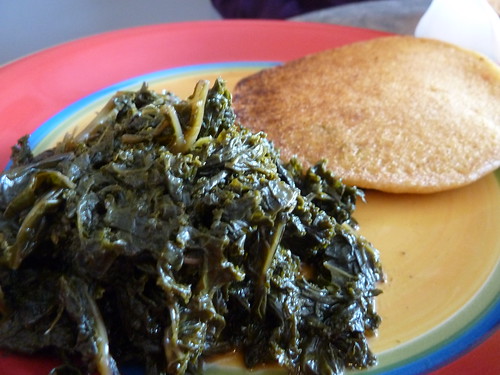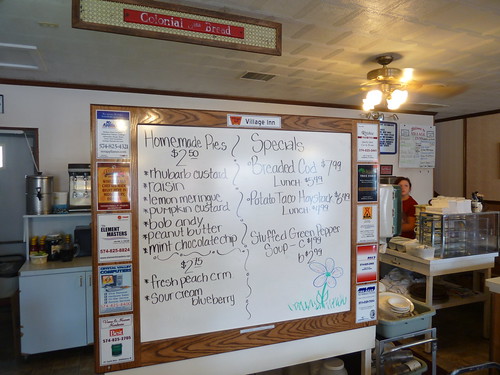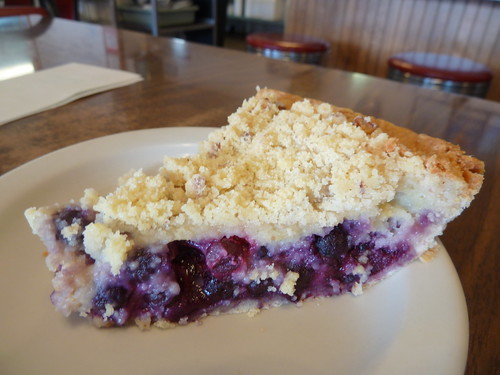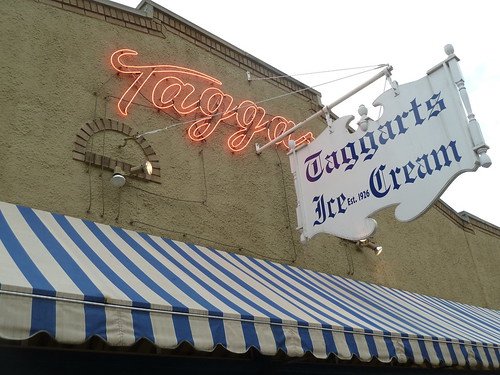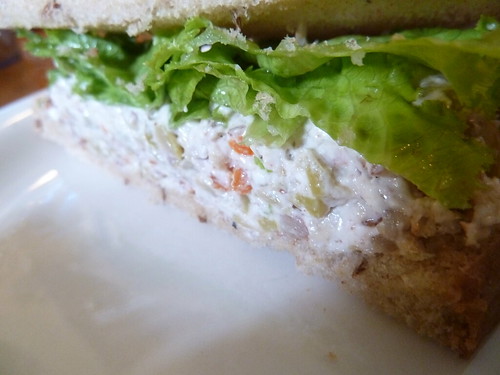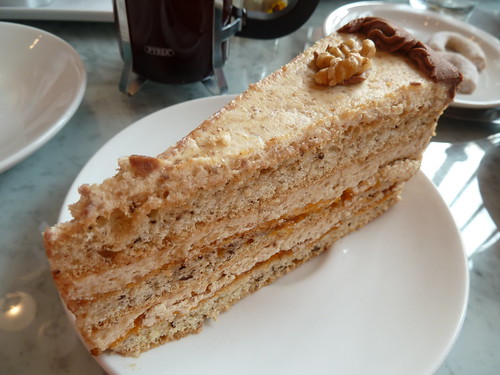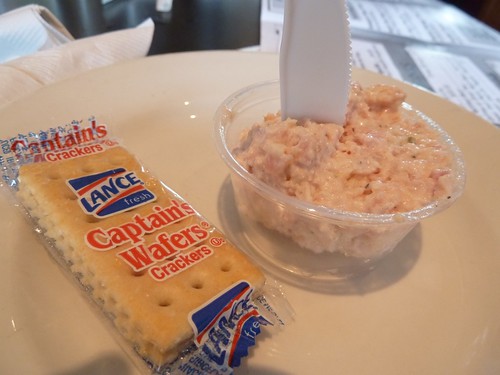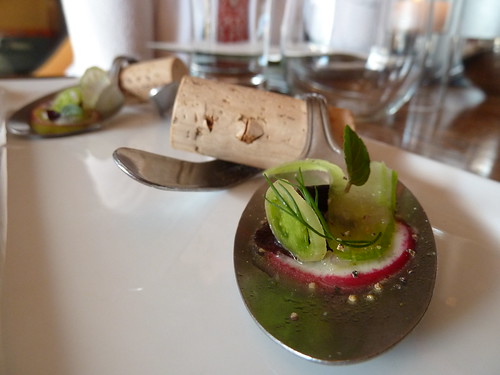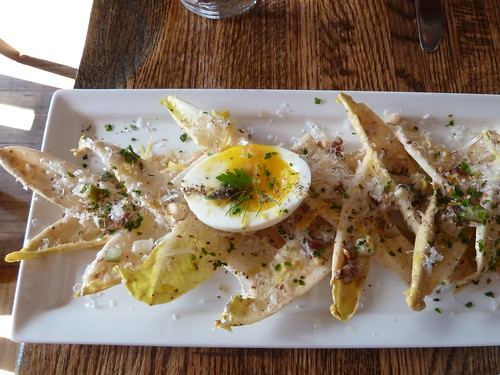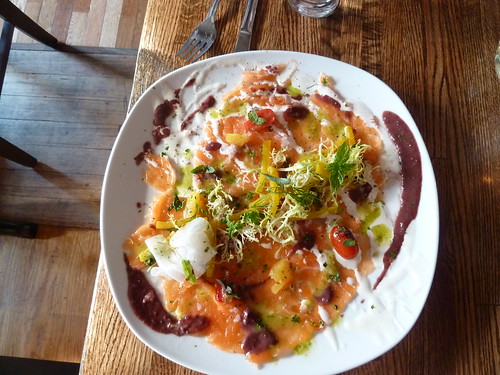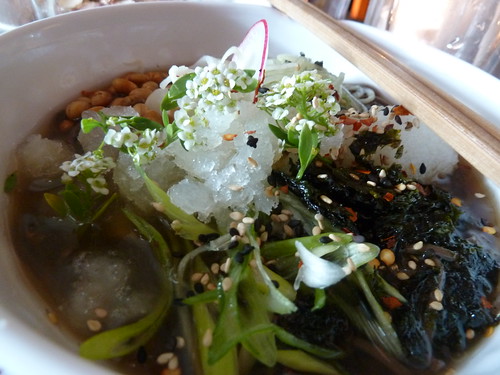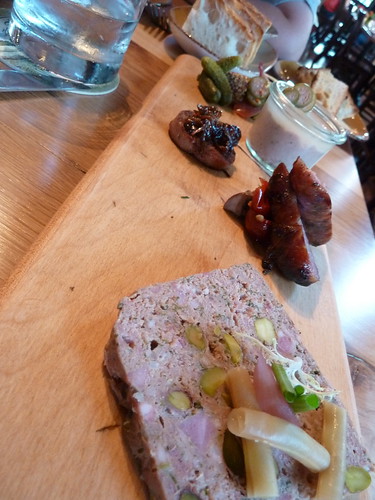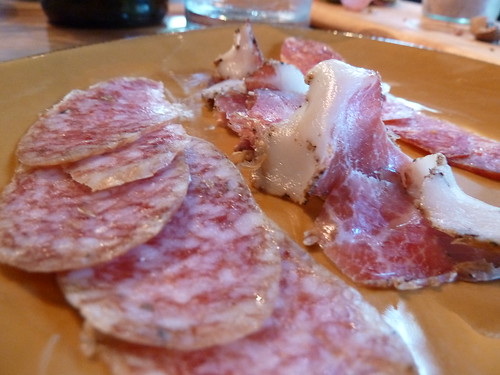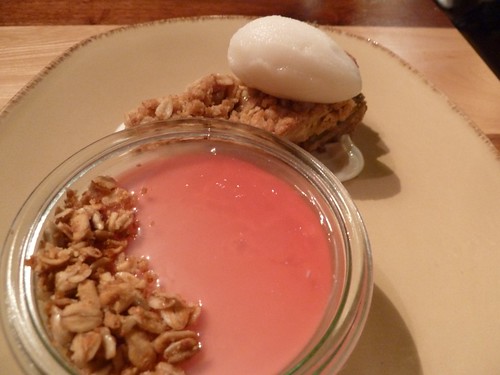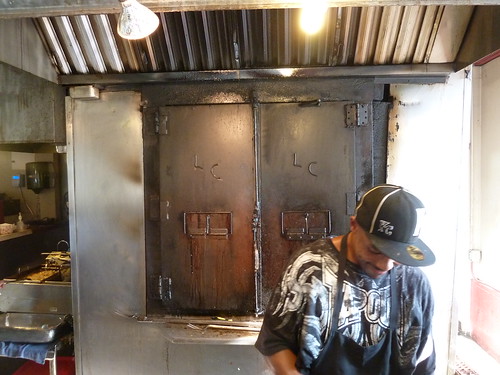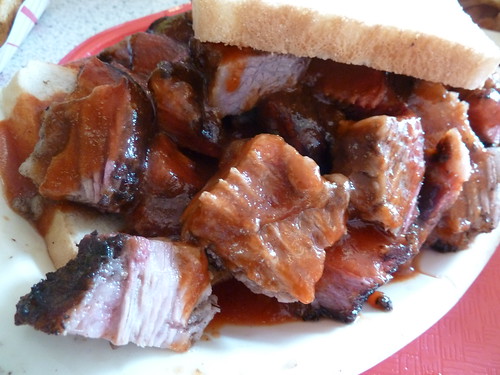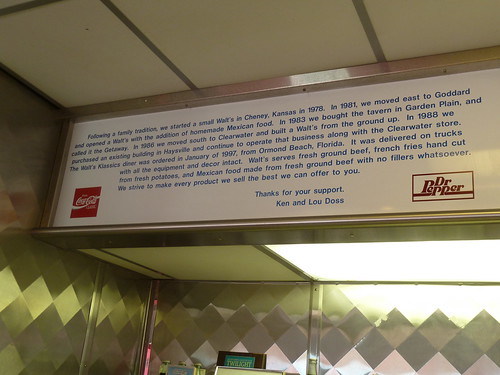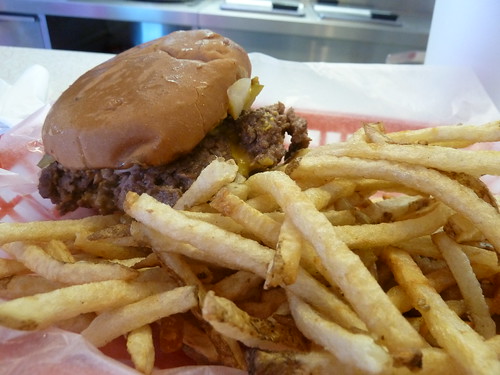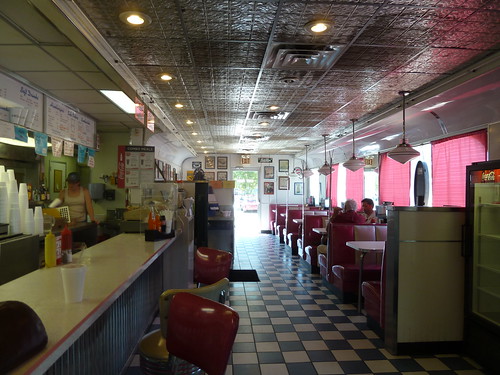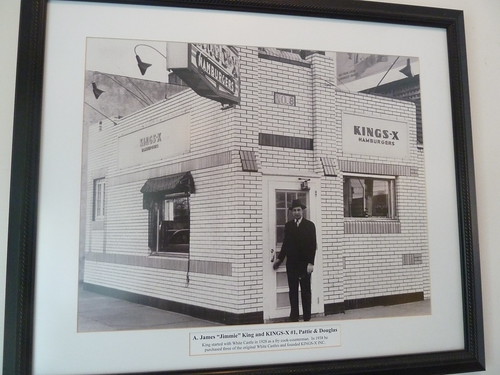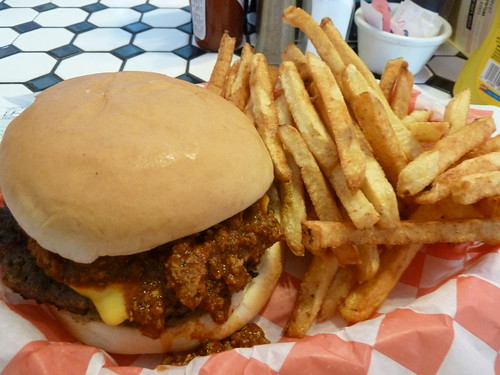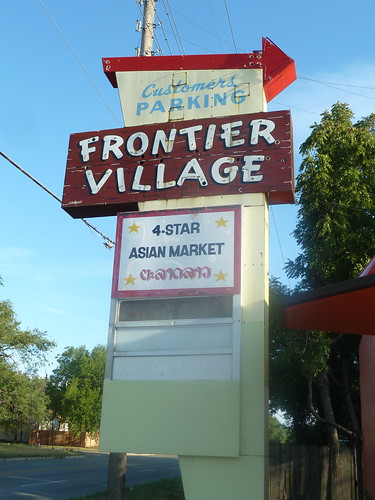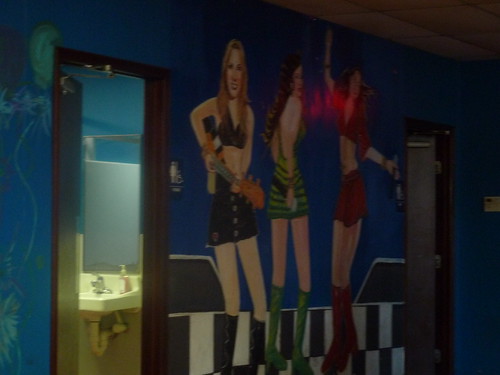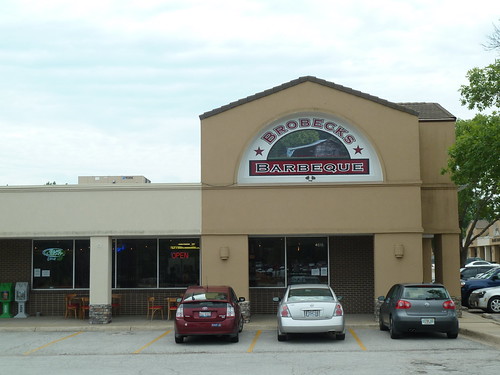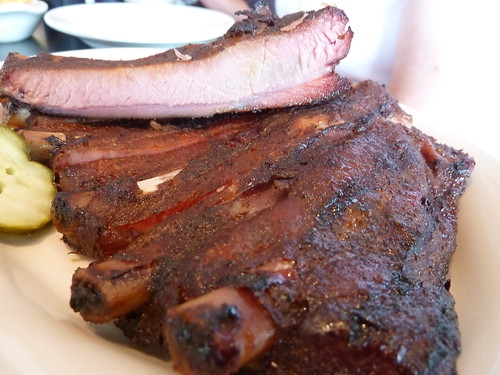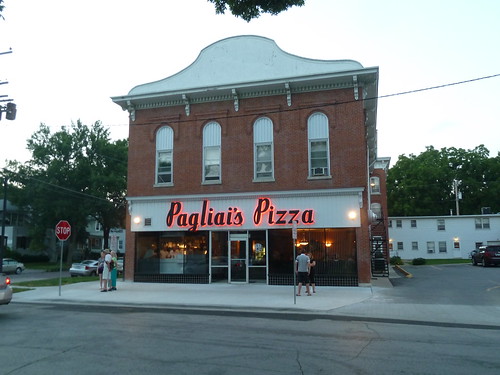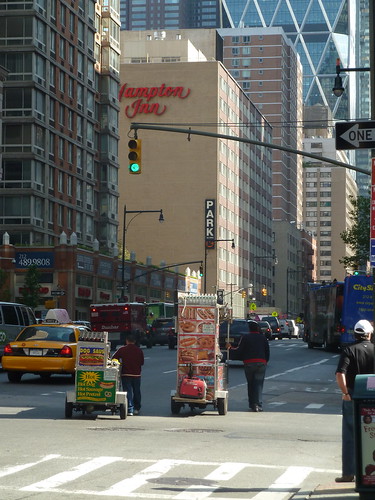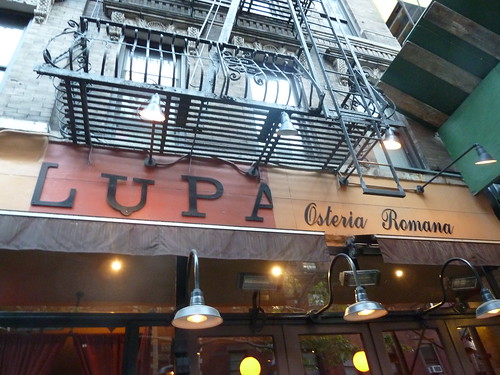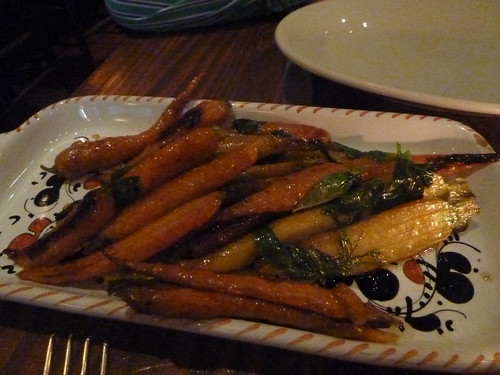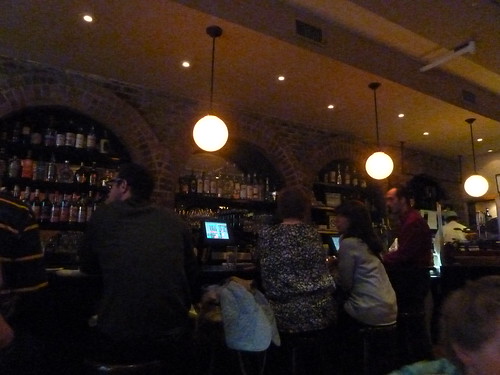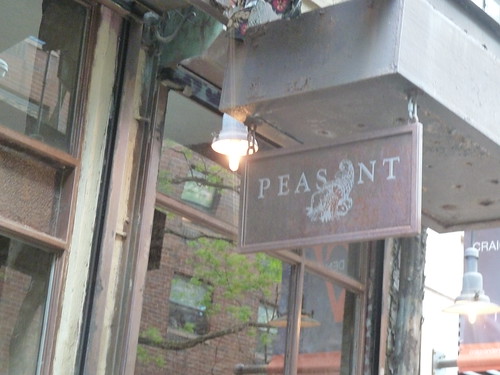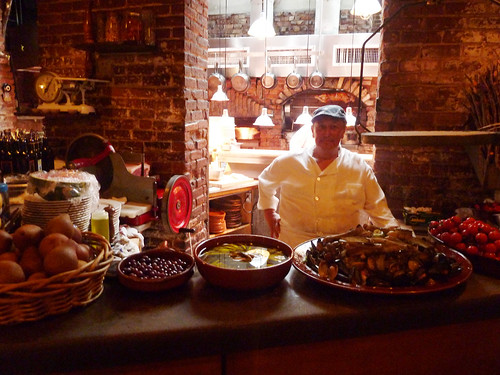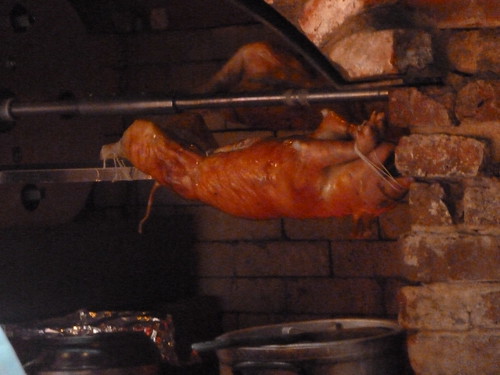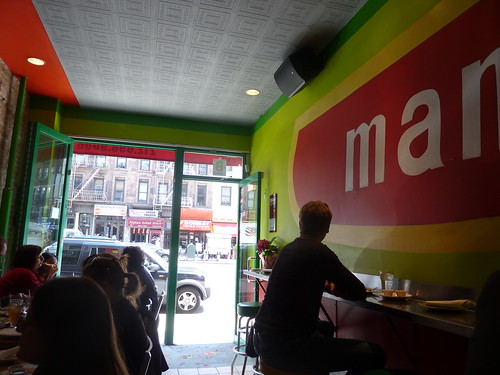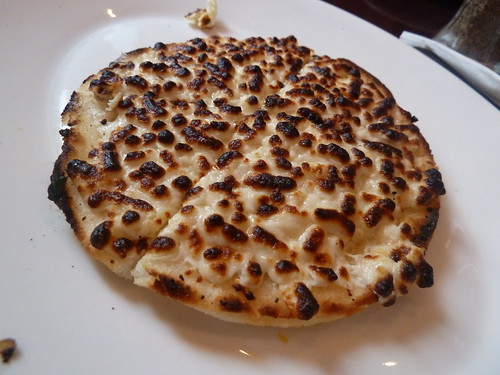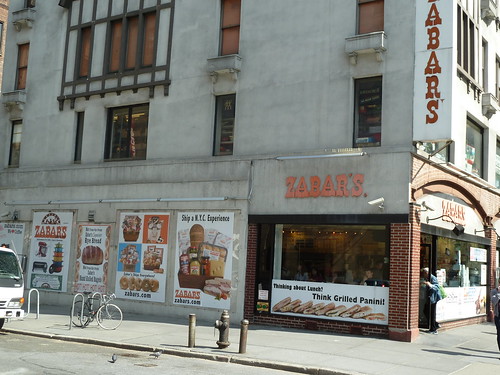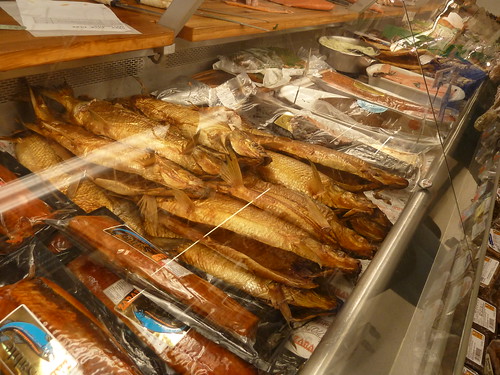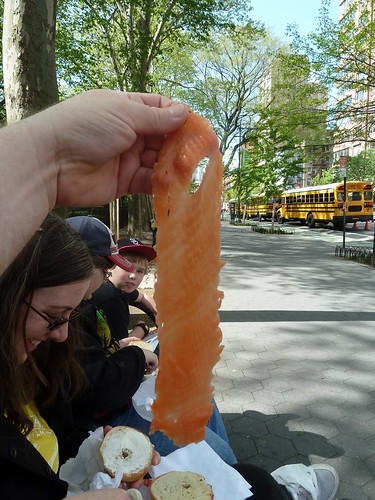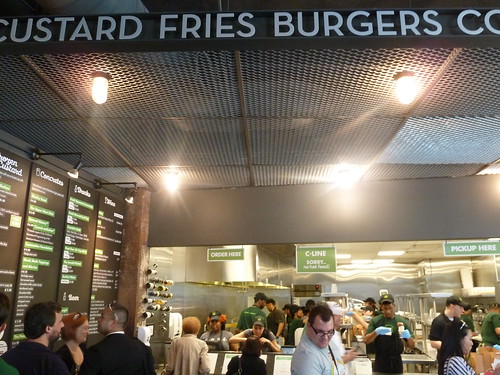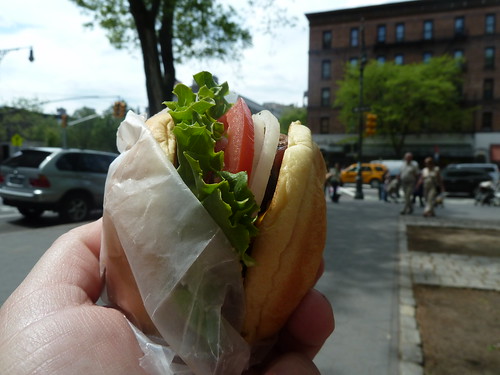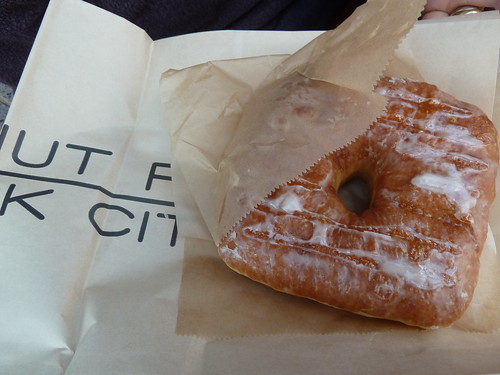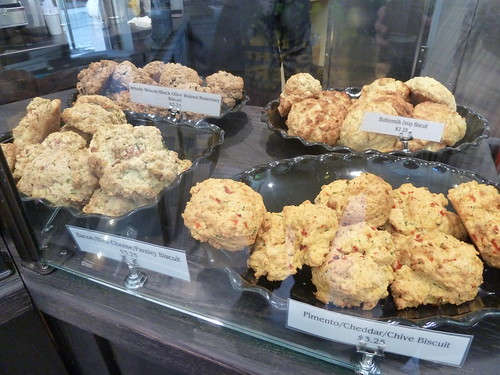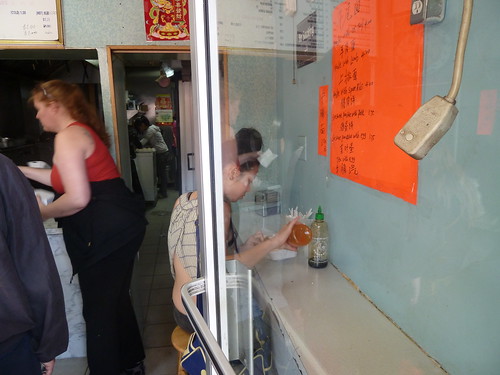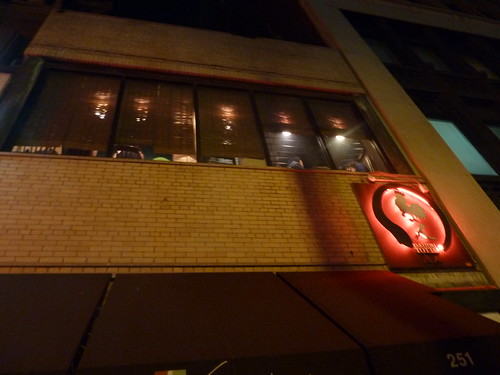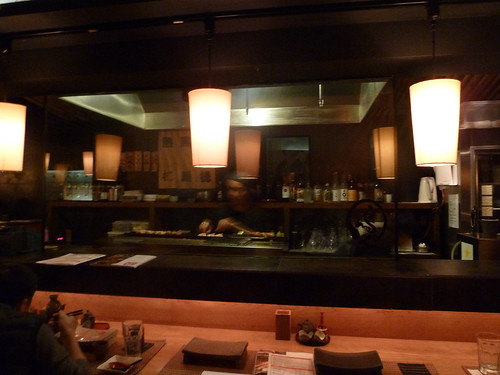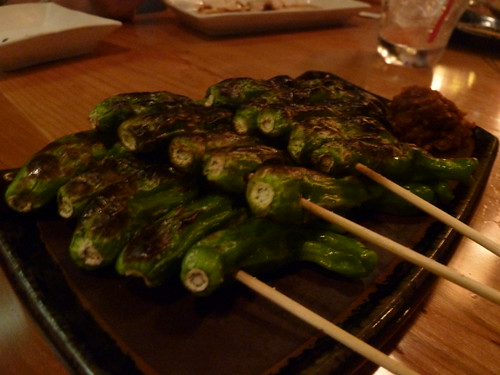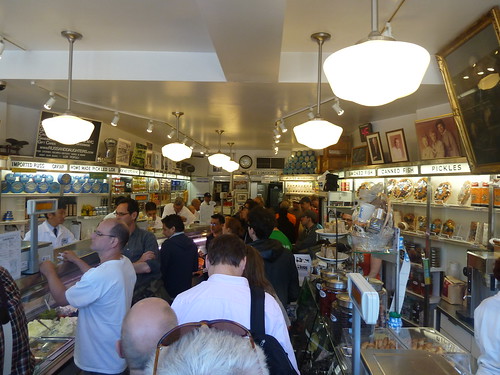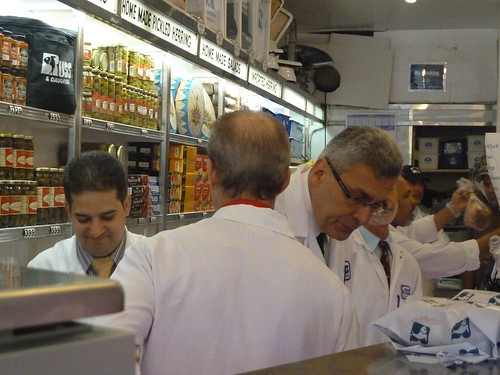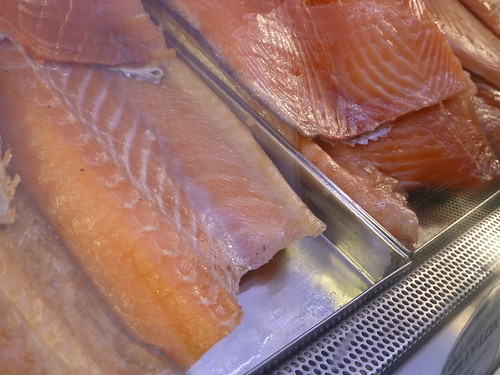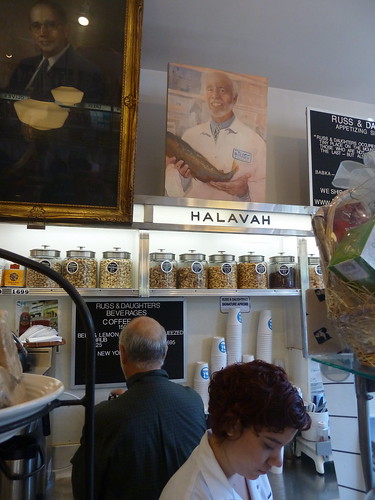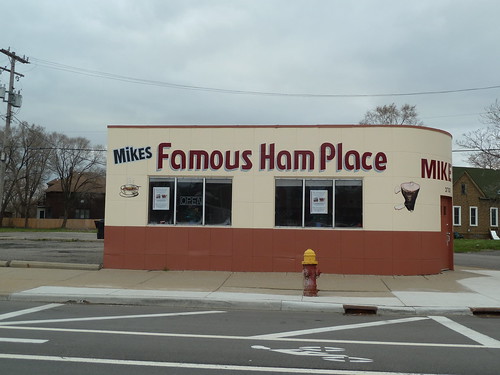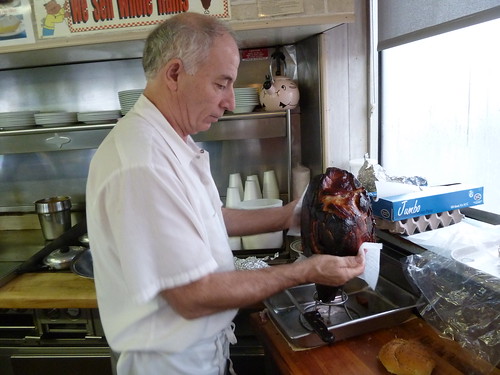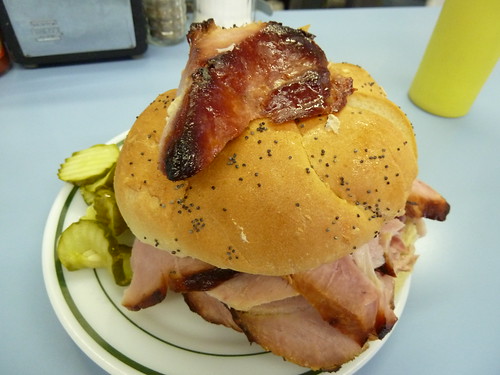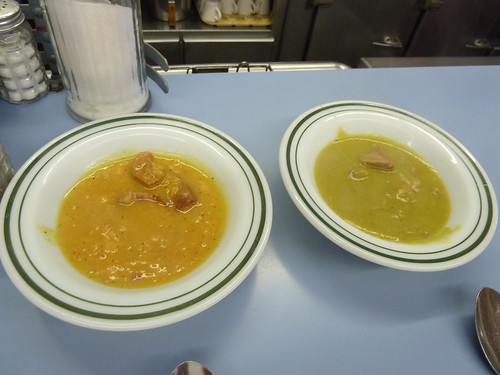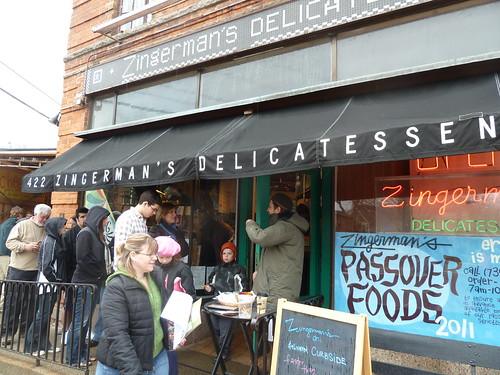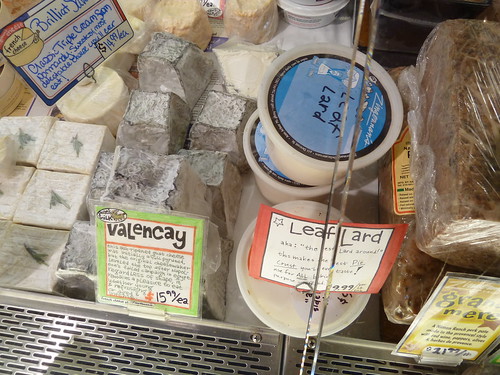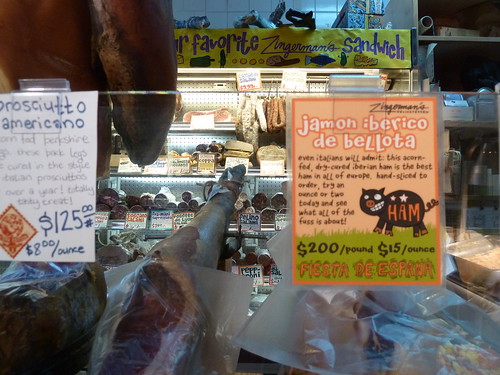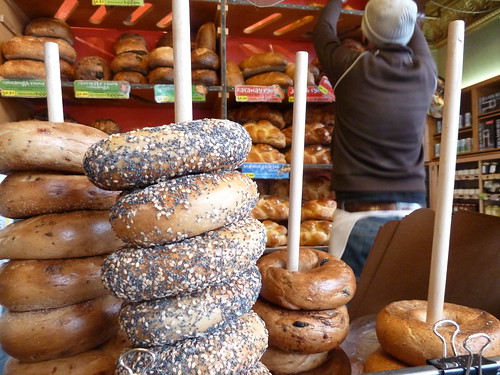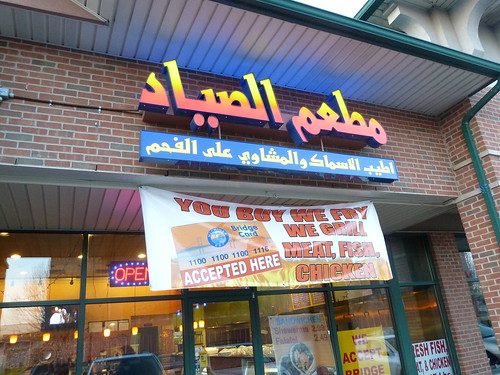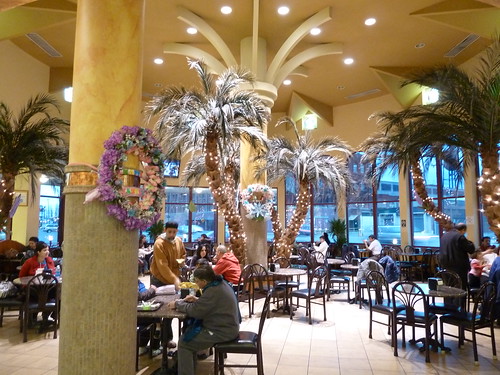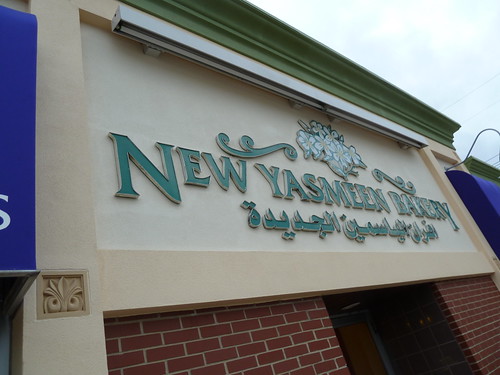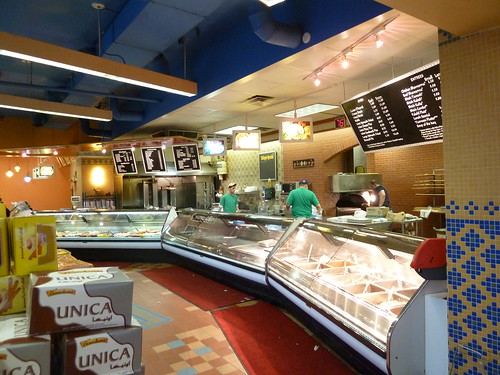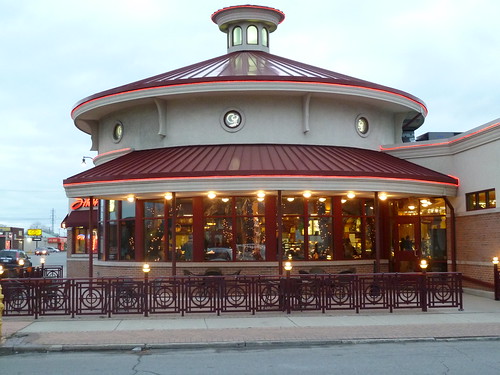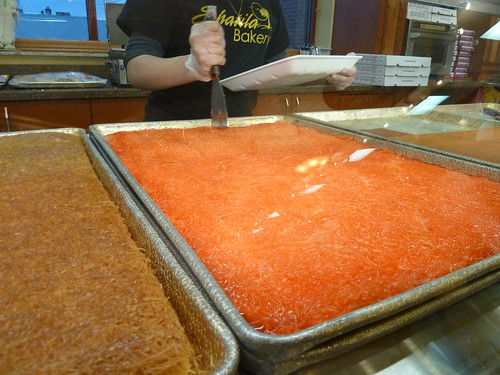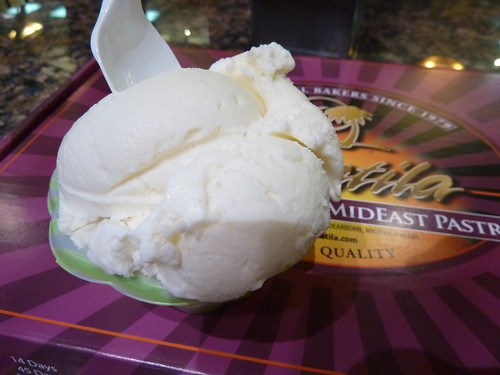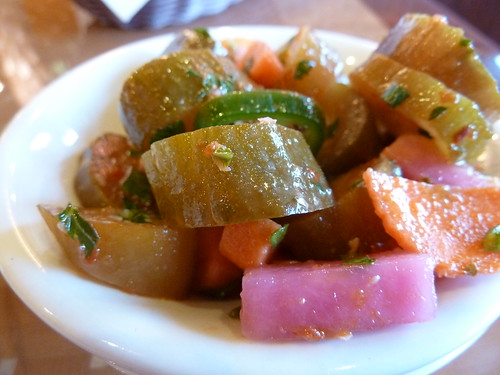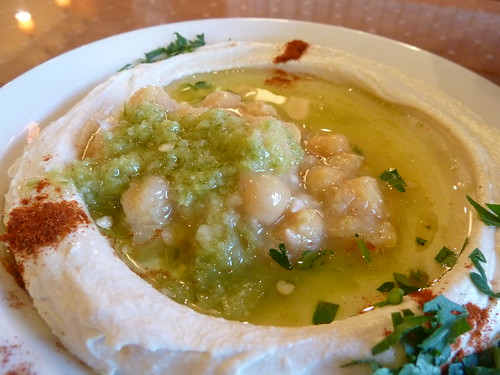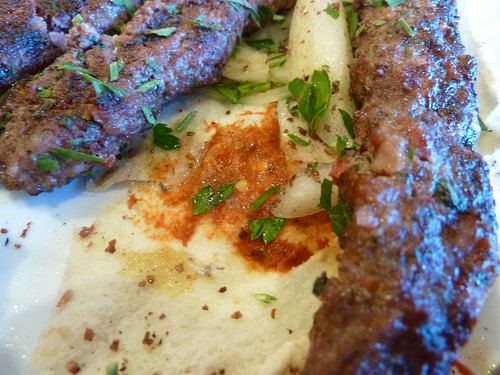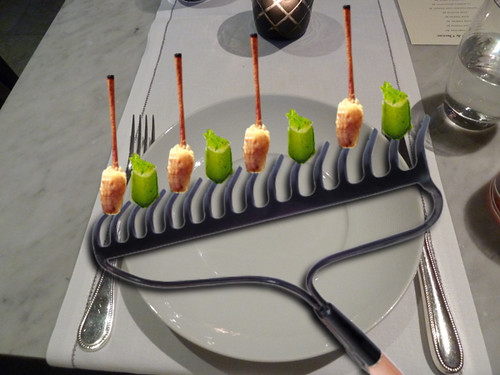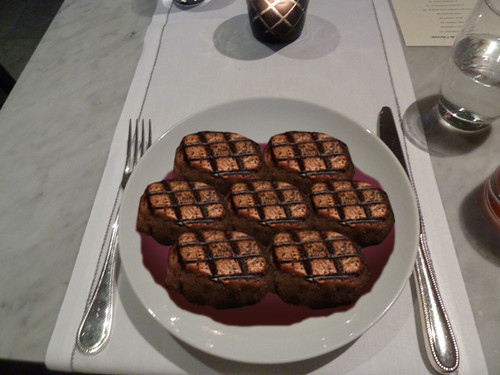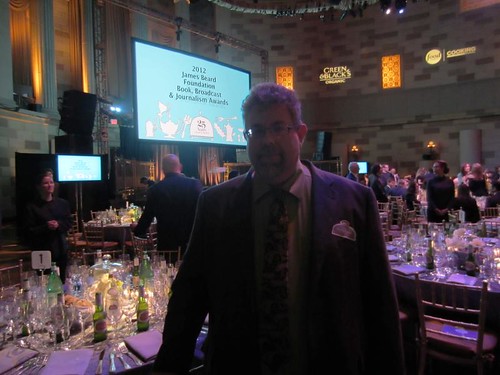
Last year I told myself we wouldn’t win a James Beard award… but deep down, a tiny part of me thought we might. This year, I knew perfectly well that being nominated against actual TV networks with actual budgets was reward enough, and a considerable feat of legitimizing, so I just went to New York to show up and have a good time. The Beard awards were held in a massive Roman tomb called Gotham Hall, formerly the lobby of a particularly ostentatious bank which survived the Depression (it was built in the Roaring 20s) but failed in the S&L crisis in the 80s. It was loud, I met John T. Edge and told him my video was inspired by all he does, I saw other swelegant people…
But enough of that. Let’s go eat.

I went to New York with the idea that I’d fly in Thursday night and be relaxed the next day. Ha! A hail storm and lightning and who knows what delayed my flight to the point where instead of hitting my hotel around 10 p.m., I hit it around 2 a.m. The next morning, groggily, I awoke with much of the morning gone. Rather than throw my entire dining schedule off, I decided to do the rest of my waking up on a subway train to Brooklyn and start my day by being at the legendary DiFara Pizza, alleged to be the best pizza in New York, when they opened at noon for lunch.

I’d heard enough about the demand at DiFara and ordering strategies (there was a time when, somehow, ordering on Facebook and then going to Brooklyn was the advised strategy) that I wondered if even then, I might be too late. Nonsense. I was the only person in line at 11:45, one of only two when the door opened, though they came quickly after that. DiFara has two shapes of pie, square and round; I ordered one of each. As soon as I heard that sizzling, I knew I needed video.
I’m always baffled by people who talk about “New York pizza.” I’m not sure what that is. If it’s round, with a doughy crust and a rounded edge but fairly flat otherwise, that style, the “Original Ray’s” style, is not just New York pizza, that’s exactly what you find all over America, Sbarro’s and Costco and so on. I’m not saying New York isn’t better than those, it plainly can be. But that’s American pizza, mall pizza, basically. Then there are New York pizzas which adhere closer to the Neapolitan style, but to me, those aren’t New York pizza, there are Neapolitan pizzas, like any other directly imported ethnic food in New York.
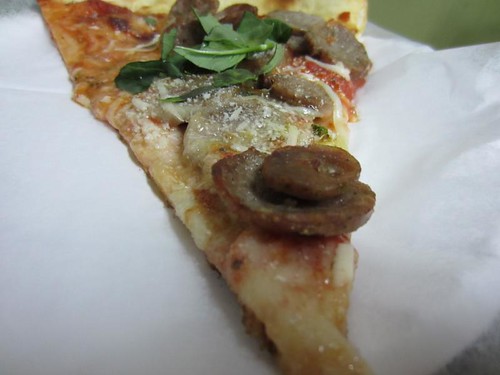
So which was DiFara? The round pie is a lot like a “New York pizza,” though the main different thing is that he tries to get some char on the crust, which you’ll never see at Sbarro. The square pie— that’s more interesting. It’s thicker, and it’s covered with more cheese, which swims in the acidic tomato sauce. (And, again, is charred on the edge, which is what lifts it from delicious to magnificent.) If anything, with its acidic 1950s tomato sauce (no trace of sweetness) and industrial cheese flavors, and its excess of both, it reminded me of… Chicago pizza. Kind of like the deep dish at La Gondola or somewhere, except that, again, the crust was blackened along the edges. So is DiFara the best pizza in New York? Well… it’s the pizza that most reminds me of Chicago pizza, so draw your own conclusions.


Dammit, she was second in the place but somehow she got the corner piece with two burnt sides. Life is so unfair!
Last year I plotted out my primary choices with the precision of Rommel planning a tank corps attack. This year, I didn’t have time, but I did have my guidebook from last year with lots of cryptic notes in it. A few hours after DiFara but before the award dinner, I was wandering around Chinatown, Little Italy, somewhere and I checked my book for somewhere to get a Chinatown snack. I saw a scribble that looked like “Jui.” I walked to where it seemed to indicate and I knew at once it had meant “Joe,” that is “Joe’s Ginger,” one of the Joe’s Shanghai restaurants famous for xiao long bao, the soup dumplings much sweated over by some LTHers.

Now that’s a soup dumpling, when you can see the liquid inside it and the dumpling sags like a water-filled balloon. Best soup dumplings ever? Typical for xiao long bao? I have no frickin’ idea, but they were very good and tasted like good examples of 1) soup and 2) dumpling, so they were fine by me. I also ordered, just to keep them company, something I think was called turnip cake. I’ve had turnip dim sum at places like Shui Wah, where it’s a flat square of mashed fried turnip; so I wasn’t at all expecting this:

You would think that these were the Italian pastry known as sfogliatelle, with its paper-thin armadillo-like shell, but this was their turnip cake, no lie. Did a rogue sfogliatelle maker from up Mott Street escape from little Italy and find refuge a few blocks south in Chinatown? I don’t know, and I hope showing his handiwork hasn’t just outed him to La Cosa Nostra, but if anything I liked these even better than the soup dumplings, the crispy exterior hiding a center of savory shredded turnip (which suggested another cross-cultural resemblance, to sauerkraut balls) dotted with bits of pink ham and green onion.
Afterwards, wandering the streets in this area, I saw carts selling “Chinese cake,” which were cute, but very plain, little muffins freshly baked on the cart; I ate a couple and then left the bag prominently on top of a full trash can where the neighborhood homeless were likely to find them and have a treat.

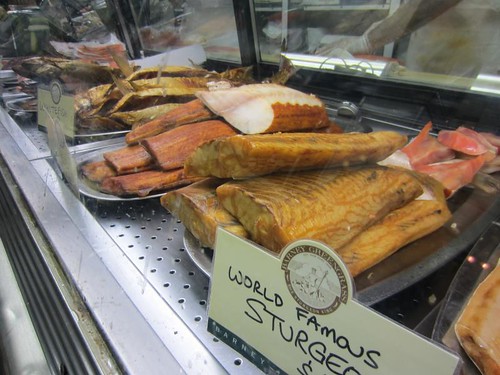
Last year I hit both Zabar’s (an old fave) and Russ & Daughters (first time), so this year my Jewish breakfast slot went to Barney Greengrass, The Sturgeon King, on the upper West Side. A tiny dining room (decorated, incongruously, with New Orleans-themed wallpaper) is served by fast-moving waiters who I had read described as slightly caustic and sarcastic. On the contrary, despite the speed at which they moved, they were unfailingly helpful to a first-timer from out of town jammed into a tiny table. At brunch the next day, Steve Dolinsky mentioned how good the service was in New York, because you can make a real living of it here, and with only one exception (the Grand Central Market, where they seemed bored and uninterested) service was excellent everywhere I went this weekend.
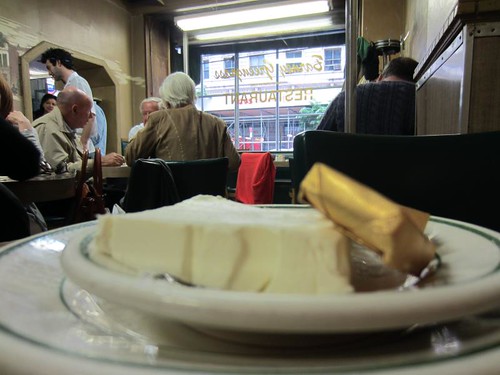
But you were asking about Barney Greengrass. Velvety, meaty sturgeon kissed lightly with smoke, good cream cheese and a toasted bagel, fresh-squeezed orange juice— exactly how you would want to live and still stay in touch with your East Side origins in the moneyed precincts of the upper West Side.

Afterwards I popped into a butcher’s next door called Schatzie the Butcher and bought my wife a logo t-shirt while admiring the very nice quality meats and chatting up the main guy that day (Richie, son of Schatzie). Here again was the most welcoming side of New York; if you want to live in this city, I highly recommend getting the several million dollars to live up here.
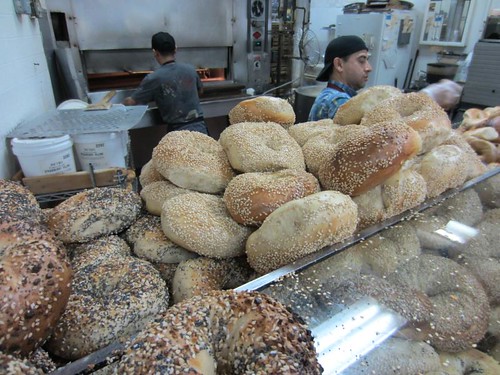
I walked up to the outskirts of Harlem to see the massive Cathedral of St. John the Divine and then over to Morningside Heights for another bagel place, Absolute Bagel. Here I found the more expected Noo Yawk atmosphere of brusque, Yiddish-inflected service. The only surprise was, the owners who were talking like that… are Thai:
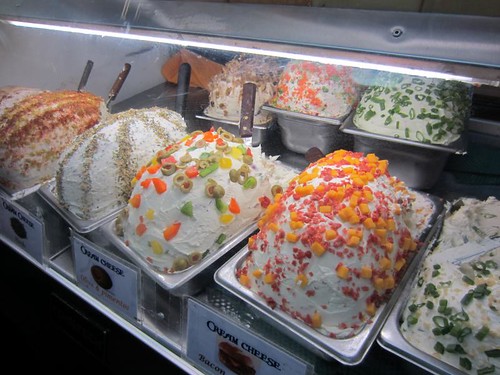
I brought a bunch of these bagels back with me, so they maybe weren’t at their peak when I got to eat them, but I don’t think they are the best in the city, as some claim— puffier and breadier than I like, without the full chewy snap of the very best bagels, like Zabar’s. (Which is still to say they beat 99% of bagels in America. Or Thailand, for all I know.)
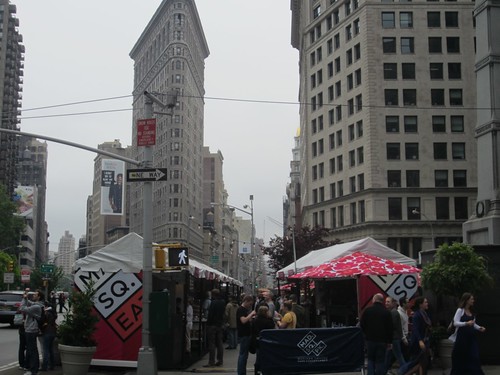
Alan Sytsma, my boss at Grub Street, had suggested a Montreal smoked meats place called Mile End, but it seemed unlikely I was going to trek to Brooklyn again for a sandwich. So fate smiled upon me and on my way to Eataly, I found a street fair. By which I mean, I ran smack into the first stand of the street fair, which was… Mile End, its smoked meat-wenches assembling smoked meat sandwiches before my eyes:
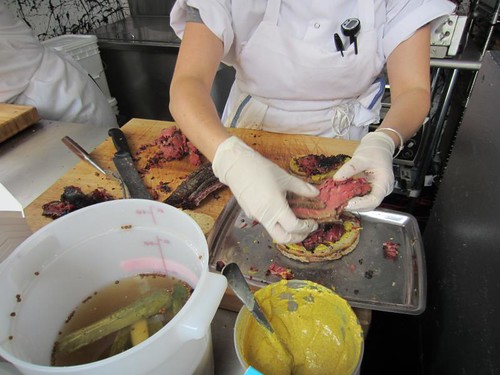
And then I saw the next stand, directly opposite… the famous (and shortly to be, James Beard Award-winning) Momofuku Milk Bar, selling their famous crack pie with no line:

There was more, but there was no way I’d get to eat anything at Eataly if I didn’t stop there. The crack pie— well, it’s good, but it’s one of those things where the city sophisticates go nuts for something that’s existed all along in the boonies— it’s basically just a really, really dense lemon chess pie.
The smoked meat from Mile End— I’d say it’s every bit as good as the smoked meat sold here at Fumare in the French Market. Which means it’s very good indeed. In fact, my theory is that smoked meat is the best thing to happen to pastrami in years. When I make pastrami it’s smoky and meaty and peppery and coriandery, but when you eat commercial pastrami, it tends to be salty with undernotes of saltiness and saltitude. It’s one dimensional. Montreal smoked meat, like homemade pastrami, restores the other dimensions and reminds you that it’s meat, first, salt and other spices second.

Eataly I did a slideshow about here at Grub Street, so I’ll just focus on what I ate at Mario Batali and Joe Bastianch’s Ikea of Italian food after an hour or so of shopping to make some room next to the smoked meat and the cracked pie. I went to La Verdure, the vegetable counter, feeling that I could use some vegetables and also that seeing what they did with fresh vegetables was probably more revealing than a panini or pizza of the quality of the entire venture.
They were, not to put too fine a point on it, two of the best Italian dishes I’ve had lately. I had romano beans in a deep, rich, roasty red sauce, served as bruschetta:

and a salad, I guess, of braised escarole with currants and pine nuts:
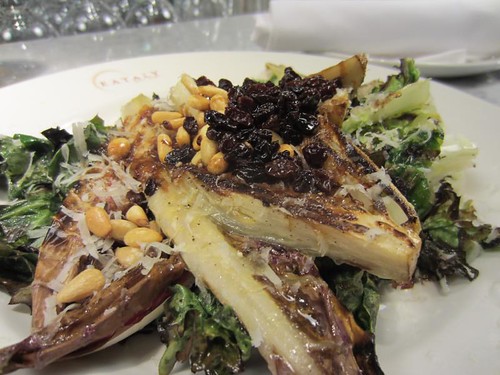
both tasting like every bit of flavor had been brought out and amplified through the cooking process. Really, I would be much closer to a vegetarian if a counter serving stuff like this was near me, dishing it up fresh every day. I can’t wait for Eataly.
After my two lunches I met up with Janet Rausa Fuller (ex of Sun-Times, fellow nominee) and her sister for drinks at The John Dory Oyster Bar; I didn’t mind that they’d pretty much eaten all the oysters and the Parker House rolls by my late arrival. We took a good little while making our way to dinner, and then had to wait for it a little longer:

Totto Ramen is a new ramen shop from the owners of my beloved Yakitori Totto last year. Not that it’s anything like Yakitori Totto’s 2nd floor yakuza bar feel; more like college town hole in the wall:


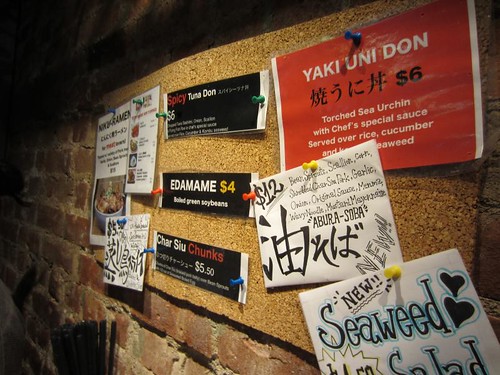
We were joined while waiting by Chuck Sudo of Chicagoist, who had dined at Ippudo Ramen earlier in the day, but apparently had no problem with a second bowl.
With the help of the specials board the menu maybe gets to ten items. We ordered the sea urchin appetizer, not that I care for uni that much but with the help of a blowtorch, this was a nice bowl of food:

The ramen— seen here with extra pork belly and a big blob of miso in the middle— was superb, a complex yet delicate broth and noodles combining velvety smoothness with a little backbone of chewiness. As with xiao long bao, I don’t know from best or less than best, I just know really good, and this was it. On the service note, with that line outside I knew we wouldn’t be invited to linger, but again, the deftness with which they hustled us out without making us feel hustled was a tribute to New York levels of service.


I had breakfast proper the next day at a little cafe called Penelope, which could fit right into Wicker Park or Logan Square (and like most of those places, charged a little too much for its partial delights, but I knew it would going in and it was fine), and after some sightseeing met Steve Dolinsky over in Hell’s Kitchen at a place he wanted to try for a magazine piece he’s doing, Salinas.

The best thing was the back room with the open roof; on this sunny, clement day it seemed like one of the best places to be in New York, which made me a little sad that no one in New York seems to go out for brunch until two o’clock or something— we had it to ourselves for most of the meal. The chef came out to sell us on the virtues of his dinner menu, which is to say, the chef came out to tacitly acknowledge that brunch wasn’t anything to get that excited about— some fried balls, some paprika-dusted vegetables, a curiously bland pa amb tomaquet, a jamon grilled cheese sandwich (this was actually quite good). Based on brunch Vera doesn’t have anything to worry about for best Spanish restaurant I’ve been to this year, but I’ll take him at his word that dinner has higher aspirations, and suggest that if it’s an evening when you’d want the stars and the fresh air, the charming back room at Salinas seems worth a gamble on the food.

Uncle John’s hot links, glowing bigger than life from the screen at the James Beard Foundation Awards in New York City.
Tags: absolute bagels, barney greengrass, di fara, eataly, james beard awards, joe's shanghai, mile end, momofuku, new york, pizza, ramen, salinas, totto ramen, xiao long bao

 Posted in
Posted in 




